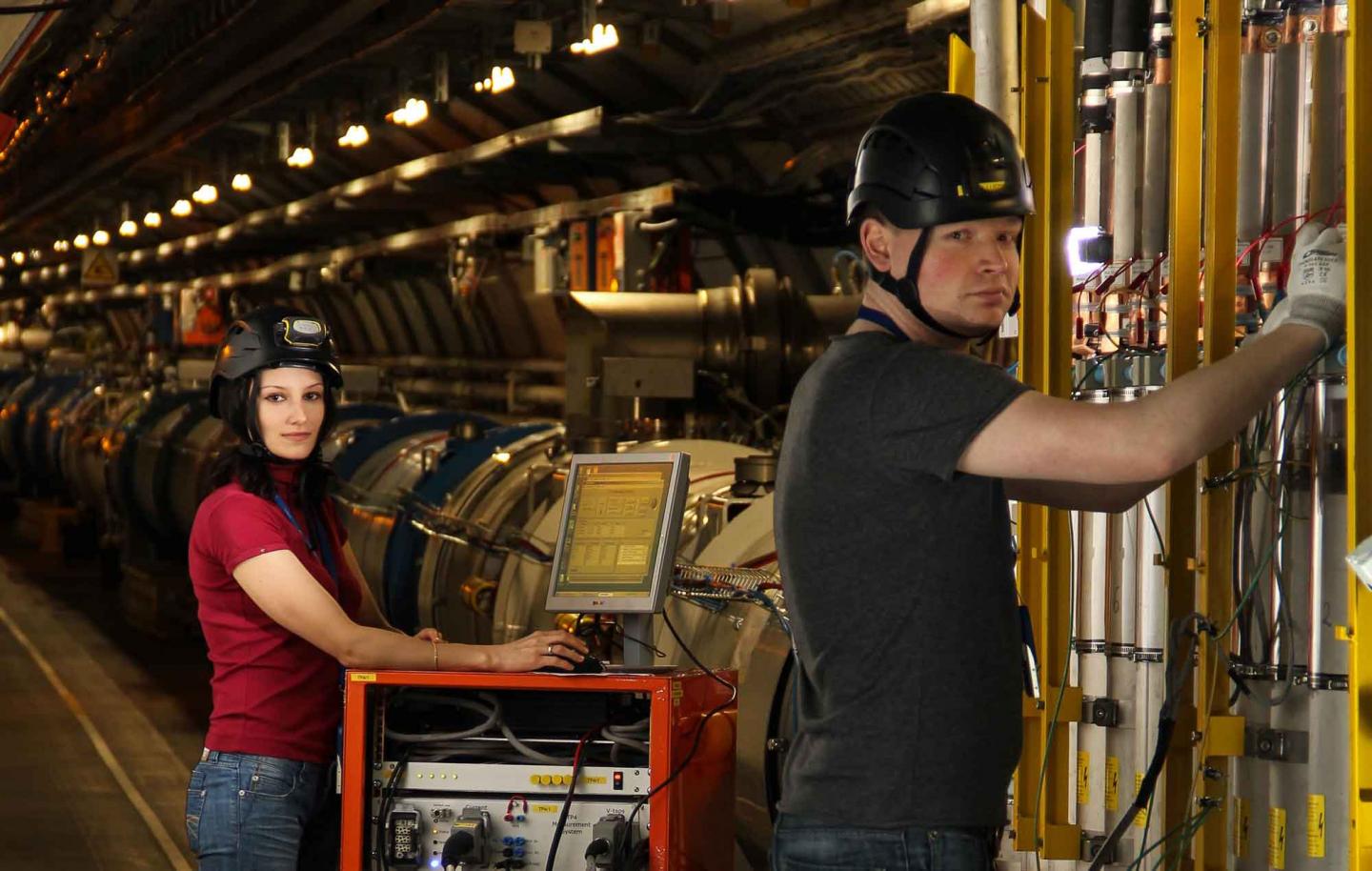The superconducting magnets on the LHC are connected in 1612 electrical circuits, supplied from 52 electrical distribution feedboxes via 3286 current leads. Were you to add up the electrical currents fed into all the magnets through the current leads, in nominal accelerator operation, you would get 3.3 million amps. The LHC is, above all, a giant electrical installation – so quality assurance testing of the electrical systems is important.
The Electrical Quality Assurance (ELQA) team has been testing the electrical circuits of superconducting magnets in the tunnel since 22 February, certifying their readiness for operation at 7 TeV per beam.
“We’re testing the electric circuits of the magnets and the instrumentation, " says ELQA project engineer Giorgio D’Angelo. "We do this by measuring their electrical parameters, including electrical continuity checks and tests of the insulation against earth.” The team applies a high electrical potential to the circuits and checks that the resulting readings are within the specifications. "If we get an unexpected result, we continue troubleshooting until we find out exactly where the problem lies," says D'Angelo.
The slightest short-circuit could lead to a major breakdown and seriously damage the magnets, so each circuit is fitted with a protection system. In the event of a quench, the protection system takes over, discharging the accumulated energy and bringing the current down to zero.
The tests need to be done with the LHC in a cold state (1.9K), and again an ambient temperature (300K), to check for any damage to the electrical system caused by thermal expansion. In addition, during LS1, 18 magnets (15 dipoles and 3 quadrupoles) will be replaced. The ELQA team will need to test them once they are installed and connected.
For LS1, 25 experts from the Henryk Niewodniczański Institute of Nuclear Physics of the Polish Academy of Sciences (IFJ-PAN) have come on board to bolster CERN’s ELQA team. "CERN’s collaboration with IFJ-PAN – which trains Electrical Quality Assurance experts – dates back to 2005," says ELQA project engineer Jaromir Ludwin. "Engineers from the institute were on hand during the construction of the LHC, and the expertise they have developed will be indispensable to the ELQA testing programme during LS1."
So far, cold tests have been done in sectors 1-2, 2-3, 4-5, 5-6, 6-7, 7-8 and 8-1. Testing should be completed by the end of April, when it will be time to restart the cycle, this time at ambient temperature.

